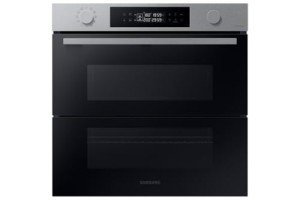How To Research Inbuilt Cooker Online
The Inbuilt Cooker: A Comprehensive Guide to Modern Culinary Convenience
In the world of contemporary cooking areas, functionality and style go hand in hand. The inbuilt cooker is a necessary appliance that reflects this trend, bringing both ease of use and visual attract culinary spaces. Unlike traditional standalone cookers, inbuilt cookers are integrated straight into cabinetry, offering a smooth look that improves the overall kitchen design. This short article explores the various types, advantages, factors to consider, and maintenance suggestions for inbuilt cookers, together with answers to often asked questions.
Types of Inbuilt Cookers
Inbuilt cookers can be found in different designs and setups to match different cooking needs and kitchen designs. The following table sums up the primary kinds of inbuilt cookers available in the market:
Type
Description
Pros
Cons
Built-in Ovens
Integrated ovens set up into cabinets
Space-saving, streamlined design, numerous sizes
Setup intricacy, expense
Induction Hobs
Cooktops that use electro-magnetic energy to cook
Quick heating, simple to clean
Needs suitable pots and pans
Gas Hobs
Cooktops utilizing gas for heat
Exact temperature control
Requires gas line installation
Mix Ovens
Ovens that combine standard and microwave functions
Flexible cooking options
Might be more costly
Steam Ovens
Usage steam convection to prepare food
Retains moisture and taste
Restricted cooking capacity
Advantages of Inbuilt Cookers
Inbuilt cookers provide a myriad of benefits that make them popular choices for modern kitchen areas. These consist of:
Space Efficiency: Inbuilt cookers are designed to fit snugly into cabinetry, making efficient usage of kitchen space and permitting a more structured look.
Improved Aesthetics: Their seamless integration adds to a sleek and contemporary kitchen style, eliminating clutter from counter tops.
Improved Functionality: Many inbuilt cookers featured innovative features like smart innovation, which allows users to control cooking settings through smartphone apps.
Variety of Options: Consumers can choose from a range of styles and fuel types, including electric, gas, and even solar choices, offering versatility to meet individual cooking preferences.
Increased Safety: Built-in systems frequently include safety features such as auto shut-off, making them safer than conventional cookers.
Considerations When Choosing an Inbuilt Cooker
While the advantages of inbuilt cookers are clear, potential purchasers should think about several elements before purchasing:
Space and Measurements: Ensure your kitchen has sufficient area for the inbuilt cooker and consider the measurements of the system relative to your cabinetry.
Fuel Type: Decide between electric, gas, or other combustion types based on your cooking requirements and kitchen setup.
Cooking Preferences: Assess the types of meals you commonly prepare and choose a cooker that uses the functions and functions you require.
Budget: Inbuilt cookers can differ substantially in rate. It's necessary to set a spending plan that thinks about both the purchase rate and possible installation costs.
Installation Requirements: Some inbuilt cookers may need expert setup, particularly gas models. Be sure to factor this into your total job costs.
Maintenance Tips
To ensure the durability and performance of an inbuilt cooker, routine upkeep is necessary. Here are some crucial ideas:
Regular Cleaning: Clean the surfaces and interiors according to the manufacturer's instructions. Avoid built in double oven and hob packages that could scratch or damage surfaces.
Check Seals and Gaskets: Periodically examine door seals and gaskets for wear and tear, as this impacts cooking efficiency and energy intake.
Adjust Temperature Settings: Test the temperature settings occasionally to ensure accurate cooking efficiency.
Professional Servicing: Schedule regular expert assessments, especially for gas designs to ensure safety and proper functioning.
Frequently Asked Questions
1. Are inbuilt cookers more expensive than standalone designs?
Inbuilt cookers can be more expensive due to their advanced functions and built-in design, but they also offer boosted aesthetics and functionality, which may validate the financial investment.
2. Can I install an inbuilt cooker myself?
While some designs have easy to use plug-in alternatives, expert installation is typically advised, particularly for built-in gas cookers that need correct ventilation and security checks.
3. What are the advantages of induction hobs compared to gas hobs?
Induction hobs heat up faster, are usually safer given that they do not produce an open flame, and are much easier to clean due to the flat surface. Nevertheless, they require suitable cookware and might have higher upfront costs.
4. How can I optimize the performance of my inbuilt cooker?
Make use of the suitable cooking settings for various kinds of food, keep the exterior and interior tidy, and guarantee correct sealing and insulation to improve efficiency and decrease energy consumption.
5. What features should I search for in an inbuilt oven?
Think about functions such as self-cleaning functions, programmable settings, temperature level probes, and smart technology capabilities for enhanced convenience.
Inbuilt cookers represent a combination of performance and design that empowers home cooks to explore their cooking enthusiasms with ease and performance. As they are available in numerous types to match diverse cooking styles and kitchen styles, comprehending their advantages and considerations allows customers to make informed options about this essential kitchen appliance. With appropriate setup and maintenance, an inbuilt cooker can end up being a valuable possession in any modern-day kitchen, making preparing an enjoyable and hassle-free experience.
